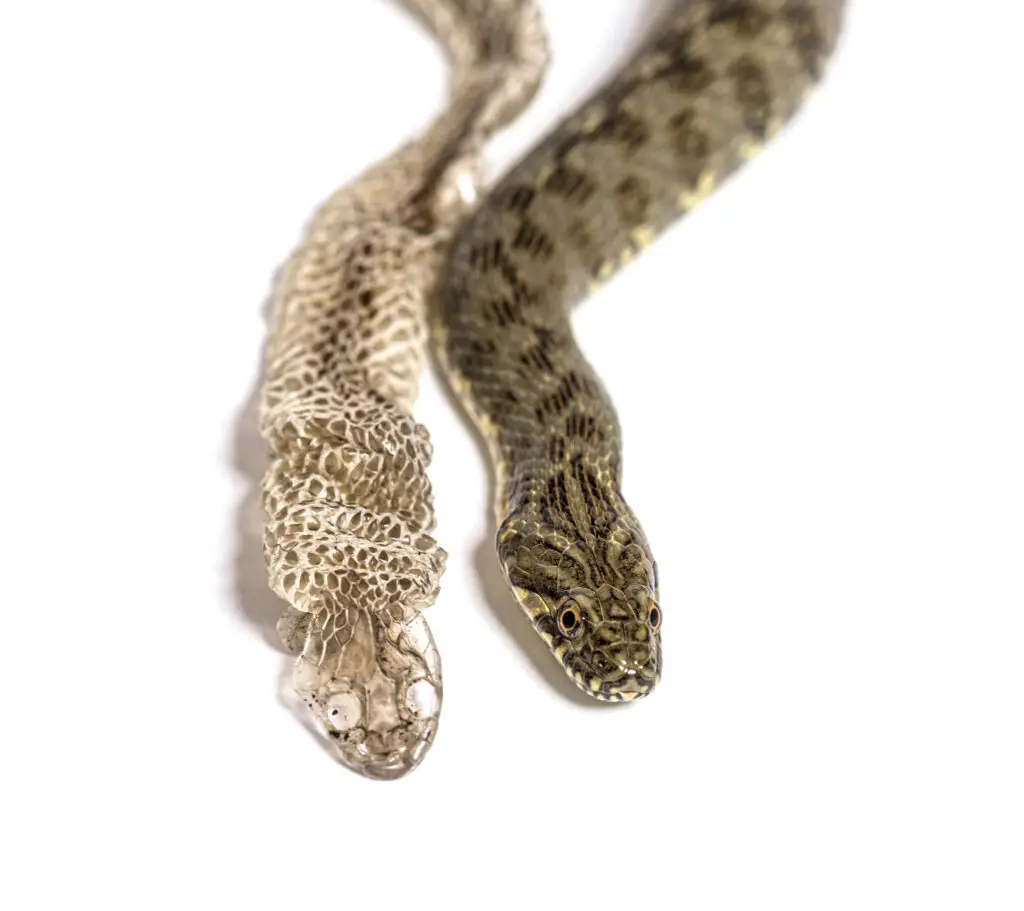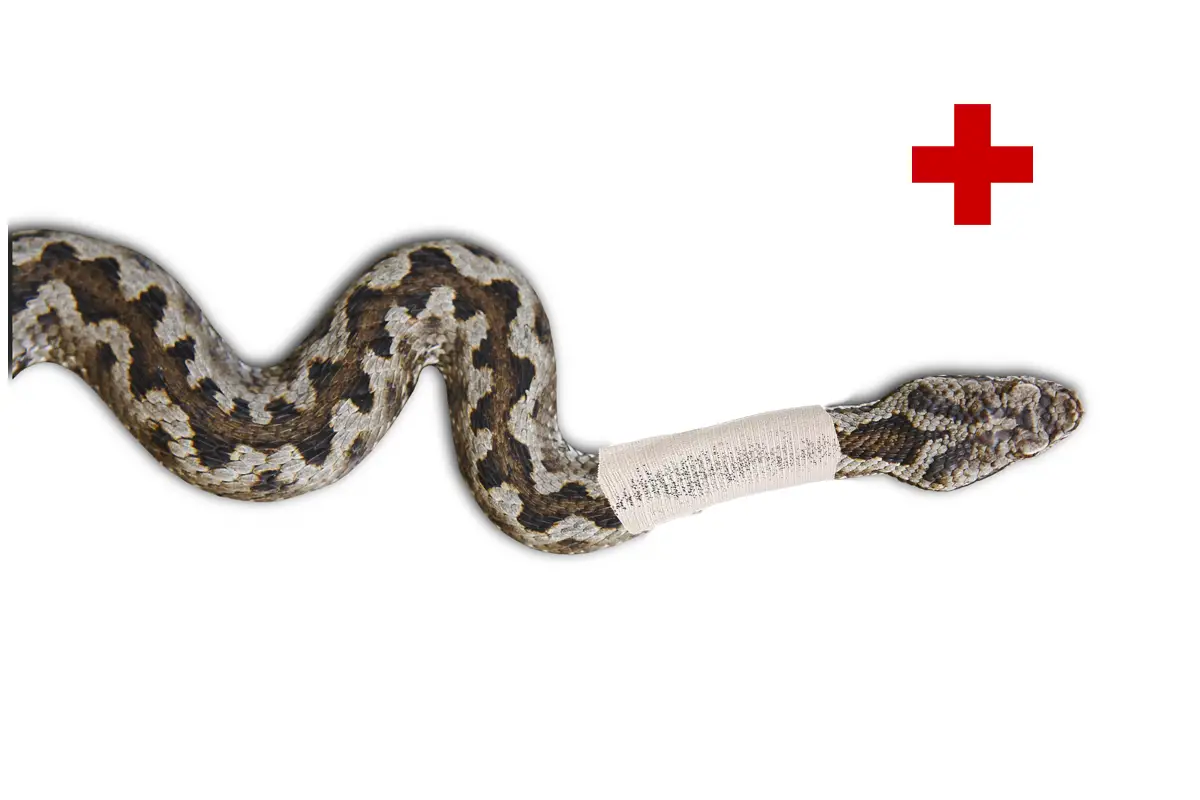Snakes are fascinating yet mysterious reptiles that instil a sense of curiosity and fear in many. Have you ever wondered if these cold-blooded creatures experience pain as we do? The answer is yes – snakes do feel pain, though their expression of it may differ from ours.
In this blog post, we’ll delve into the truth behind snake pain perception, debunk popular myths, and explore how to recognize when a snake is in distress . Do snakes feel pain?
Key Takeaways
- Snakes do feel pain, though their expression of it may differ from mammals due to differences in their nervous system and neuroanatomy.
- Recognizing signs of pain such as loss of appetite, aggression or duller colors is important for snake owners to provide proper care and minimize potential harm caused by human actions.
- Decapitation is not a humane method of euthanasia for snakes as they can remain conscious and feel distressful processes like flailing around or biting themselves. Overall, understanding snake pain perception should inform our treatment and respect towards these fascinating creatures.
Understanding Pain In Snakes
Snakes have a nervous system that is similar to other vertebrates, which includes the presence of pain receptors, suggesting they can perceive pain.
Nervous System And Pain Perception
To fully understand how snakes perceive pain, it is crucial to delve into their nervous system. Snakes, like other reptiles, possess the necessary neuroanatomy to process pain sensations.
Despite being cold-blooded creatures with a slower metabolism than mammals, snakes still demonstrate physiological responses to painful stimuli similar to humans and other animals.
For instance, when stepped on or injured by predators, they may exhibit reactions such as flailing around or acting aggressively in self-defense.
In contrast to mammals who express feelings through facial expressions or vocalization, deciphering pain in snakes can be challenging due to their stoic nature. However, snake owners should look out for signs like duller colors, loss of appetite, immobility or aggression which might suggest that their pet snake is experiencing some level of discomfort.
Scientific Evidence For Snakes Feeling Pain
Over the years, researchers have gathered substantial evidence to support the idea that snakes, like other reptiles, have the necessary neuroanatomy and pain receptors to perceive pain.
Various studies in veterinary medicine indicate that all reptiles possess similar nervous systems to mammals, allowing them to detect painful stimuli just as humans do. One such study by Dr.
With advancements in technology and scientific tools available today, experts can monitor snake reactions under different conditions that involve potential harm or discomfort.
A classic example is when scientists administer pain-reducing drugs to snakes during surgery or after severe injuries; they notice a significant change in their behavior due to relief from suffering.
Danny Ripp from Nebraska Snakes and Reptiles mentions cases where snake owners reported aggression or distressful behaviors following an injury or illness. These instances further emphasize how snakes respond negatively when subjected to harmful situations or bodily damage.
Types Of Pain Snakes May Experience
Snakes may experience physical injuries, discomfort from cold weather, pain while shedding their skin, and discomfort while giving birth.
Physical Injuries
Physical injuries are unfortunately a common occurrence for snakes in the wild and captivity. These injuries can range from minor scratches and cuts to more severe cases like broken bones or even decapitation.
One example of physical injury is when a snake gets caught in garden netting, leading to cuts and potential limb loss. Another instance involves snakes being pinned to trees or cut in half for skinning purposes.
In these scenarios, it’s clear that snakes do feel some degree of pain or distress as an outcome of their injury.
Cold Weather
Snakes are cold-blooded ectotherms, which means that their body temperature fluctuates with the surrounding environment. During cold weather, snakes can feel discomfort and even pain as they struggle to regulate their body heat.
This is because a low body temperature slows down their metabolism, making it difficult for them to move or digest food properly. Some snakes hibernate or enter brumation during winter months when temperatures drop too low.
However, those that remain active may seek out warm spots like sunny rocks or human-made structures such as buildings or roadsides to bask in the sun’s warmth and keep themselves from getting too cold.
Shedding Their Skin
Shedding is a crucial process for snakes as it helps them maintain healthy skin and remove potential parasites. Shedding occurs when snakes outgrow their old skin, which becomes dry and starts to peel off.
Snakes shed about once every few months, depending on the species and age; during this time, they may feel some itchiness in the days leading up to shedding but rarely experience pain.
The process may take around 2-3 weeks to complete, during which snakes lose most of their senses in the outer layer of their skin, making it a distressful process for them.
Snake owners need to provide their pets with essential humidity and temperature levels to facilitate this shedding process properly.

Giving Birth
Snakes can experience some discomfort when giving birth, although it is not as painful as being decapitated or cut in half. Oviparous snakes lay eggs while ovoviviparous snakes give birth to live young.
In the case of egg-laying species, there may be pain if something goes wrong during the process. For example, egg-binding occurs when a snake struggles to lay an egg due to its size or position.
This condition can cause intense pain and distress for the snake and requires immediate veterinary attention.
Do Snakes Feel Pain When Eating Large Prey?
Snakes have a unique anatomy that allows them to swallow prey much larger than their heads. While it is unclear if snakes feel pain when eating prey of appropriate size, there are instances where swallowing prey too large for their bodies can result in discomfort or even death.
Additionally, the process of swallowing can take several hours and requires significant energy from the snake’s body. During this time, the snake may experience discomfort due to the stretching and contracting of its muscles.
It’s worth noting that while some behaviors may indicate discomfort during feeding time (such as biting themselves or flailing around), these actions do not necessarily confirm pain perception.
How To Recognize A Snake In Pain
Snakes in pain may exhibit certain behaviors that you can observe to determine their discomfort. Here are some signs to look out for:
- Loss of appetite or refusal to eat
- Increased aggression or defensive behavior
- Duller colors and lack of vibrancy
- Immobility or lethargy
- Restlessness or rolling around excessively
- Flailing around or excessive self – defense movements
These behaviors can indicate that a snake is in pain, which may be caused by physical injuries, shedding, cold temperatures, and giving birth, among others. It’s important to give snakes proper care to prevent unnecessary pain and discomfort.
The Impact Of Human Actions On Snake Pain
Human actions have a significant impact on snake pain, often causing unnecessary suffering. People who hunt snakes for their meat or skin can cause prolonged pain and distressful processes by striking them at the head with force and nailing their heads to a tree to peel off their skin.
Similarly, many people keep snakes as pets without providing adequate care, such as proper food, heat regulation, and shelter.
Moreover, humans may also accidentally step on snakes while walking outside or driving cars through natural habitats where they reside. This type of accidental injury can cause lasting physical damage that results in chronic pain and deformities if not treated appropriately.
Debunking Myths About Snake Pain
Contrary to popular belief, decapitated snakes do feel pain, even if they are still capable of reflexes. Let’s debunk more myths about snake pain and discover the truth behind these fascinating creatures.
Decapitation And Pain
Decapitation is a common way of killing snakes, but it may not be as painless as previously thought. Because snakes are cold-blooded with a slow metabolism, they can remain conscious and feel pain for up to an hour after their heads have been cut off.
This distressful process is due to the fact that snake nerve endings process pain differently than humans .
Pain And Aggression
Snakes are known for their powerful and often lethal bites. It’s essential to understand that when a snake bites, it is likely because it feels threatened or fearful. Some snakes may also experience pain, which can make them more aggressive in certain situations.
For instance, if a snake has an injury or physical discomfort like egg-binding or shedding its skin, it may become more defensive and bite more readily than usual.
Additionally, handling snakes roughly or squeezing them too tightly can cause pain and provoke aggression.
Overall, understanding how pain relates to aggression in snakes is critical for anyone who interacts with these animals regularly. While they may not show facial expressions as humans do, they still do feel emotions such as fear and anxiety that can influence their behavior.
The Importance Of Pain Awareness For Snake Conservation
Pain awareness is essential for the conservation of snakes. It’s crucial to understand that these animals do feel pain and take care to avoid inflicting unnecessary harm on them.
When snakes experience pain, they become aggressive, dull in color, lose their appetite and become immobile.
In addition to this, it’s important to remember that snakes play a vital role in maintaining the balance of ecosystems worldwide. They help control pest populations by consuming rodents and other small animals that damage crops and carry diseases harmful to humans.
Finally, raising awareness about snake pain can inspire people who own or handle these animals to provide better care for them. Good care is essential for potential snake owners as they require warmth; proper nutrition and a comfortable environment where they can shed safely without complications.
Conclusion
In conclusion, the evidence is clear: snakes do feel pain. They may not show it in the same way that mammals do, but their nervous system and neuroanatomy indicate that they are capable of experiencing discomfort, fear, and even pleasure.
This knowledge should inform our treatment of these creatures; we must take care to minimize any pain or distress they might experience due to human actions such as capturing or killing them for fashion purposes.
FAQs:
Do snakes have the ability to feel pain?
While it was previously believed that reptiles like snakes were incapable of feeling pain due to their simple nervous systems, recent studies have shown evidence that they do experience some level of discomfort and react to painful stimuli.
What types of stimuli can cause snakes to experience pain?
Snakes may experience pain from injuries such as bites or fractures, as well as more subtle forms of trauma such as handling or exposure to extreme temperatures.
How can you tell if a snake is in pain?
Signs of discomfort in snakes may include heightened aggression, reluctance or inability to move normally, and changes in breathing patterns or behavior.
Is there any way to treat a snake’s pain?
Treatment options for injured snakes are limited but may include providing a quiet and stress-free environment while allowing time for healing, administering medication under the guidance of an experienced veterinarian specializing in exotics care, and avoiding further aggravation or damage by keeping them away from potential sources of danger or harm.




